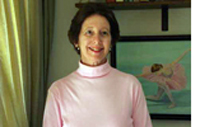| |
|
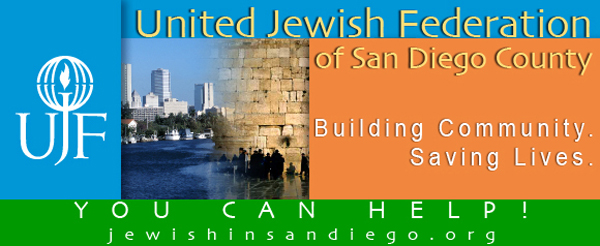

MONDAY, JULY 28
.jpg)

SATURDAY, AUGUST 2-SUNDAY, SEPTEMBER 7

FRIDAY, SEPTEMBER 12, 2008 Temple Solel S'more Shabbat
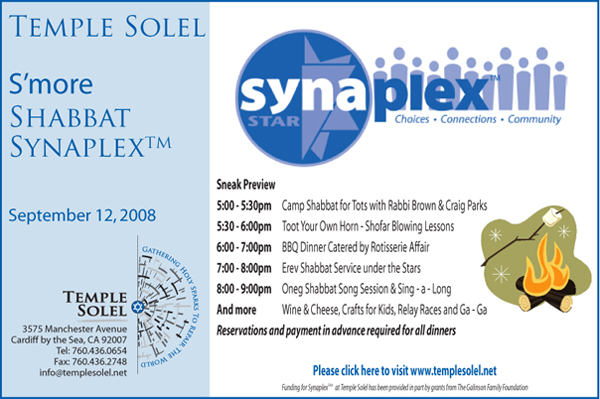
___________________________________________________________________
MON., SEPT. 29-THURS., OCT. 9


THE VIEW FROM JINSA
Key to Mideast peace not change among the Israelis but among the Palestinians
By Shoshana Bryen
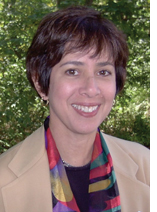 WASHINGTON, D.C.—British Prime Minister Gordon Brown followed France's Nicolas Sarkozy to the Knesset to talk about love of and defense of Israel. They both followed President Bush. Where Sarkozy quoted the Bible, Brown spoke of his father, a minister who served as Chairman of the Church of Scotland's Israel Committee. "There was never a time as I was growing up that I did not hear about, read about or was not surrounded by stories of the struggles, sacrifices, tribulation and triumphs as the Israeli people built their new state. And I am proud to say that for the whole of my life, I have counted myself a friend of Israel." WASHINGTON, D.C.—British Prime Minister Gordon Brown followed France's Nicolas Sarkozy to the Knesset to talk about love of and defense of Israel. They both followed President Bush. Where Sarkozy quoted the Bible, Brown spoke of his father, a minister who served as Chairman of the Church of Scotland's Israel Committee. "There was never a time as I was growing up that I did not hear about, read about or was not surrounded by stories of the struggles, sacrifices, tribulation and triumphs as the Israeli people built their new state. And I am proud to say that for the whole of my life, I have counted myself a friend of Israel."
He even brought an interesting gift with him. The Guardian reports that Brown signed an academic exchange program, The Britain-Israel Research and Academic Exchange (BIRAX) to award scientific research grants to junior academics from postdoctoral students to mid-career researchers and lecturers. It was a direct slap at those in Britain who have been agitating for an academic boycott of Israel. And for those concerned about the lessening of Holocaust education in Britain (there is a similar decline in teaching about Winston Churchill), Brown made the point that, "each year and every year two teenagers from every secondary school travel to Auschwitz. And when they return home and share their experiences - raw and direct and powerful - I have seen the profound effect their message has on their classmates: that discrimination, persecution, anti-Semitism and racism should be banished forever."
There is no reason, certainly, to question Brown, or Sarkozy or President Bush for that matter, when they call themselves friends of Israel. We are pleased when they put Israel in its rightful place in the democratic firmament, appreciate its struggles and successes, and offer solidarity against Iranian threats.
Where they fall short is in their common belief that Israel holds the key to the creation of a democratic state of Palestine that will live as a happy neighbor. Western leaders believe that Israel should agree to the 1967 borders. Israel should "freeze - and withdraw from" (Brown's words) settlements. Israel should "share" Jerusalem. Israel should make the Palestinians economically viable and politically moderate. Brown added, "Without compromising your needs for security, we need your help in easing the obstacles to Palestinian economic growth - including the reopening of the Chamber of Commerce in East Jerusalem. You - Israel - drawing upon your deep wells of hope and aspiration to give hope and aspiration to others."
It seems not to have occurred to him, or the others, that Israeli hopes and aspirations are precisely what drive certain Palestinians into murderous (literally) rages. Israeli capabilities and successes and accomplishments do not inspire the Palestinian leadership - otherwise the greenhouses would still be exporting vegetables.
Palestinian leadership, Hamas and Fatah both, consider the independence and continued existence of that State of Israel - so much appreciated by Brown, Sarkozy and Bush - to be a mistake perpetrated on the Palestinian people - mainly by the British, the French and the Americans. It is the Palestinian leadership, not Israel's leadership, that has to make the great leap of understanding, and the world's democratic leaders should start there, not in the Knesset.
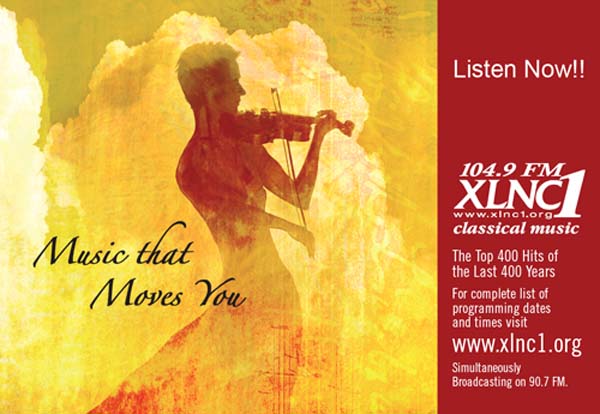

THE JEWS DOWN UNDER
Jewish scholar sees softening attitudes among Jews towards 'Messianic Jews'
By Garry Fabian
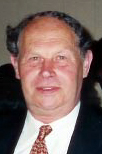 MELBOURNE - A Jewish scholar who specializes in studying Christian theology says the Jewish community may need to come to terms with Jews who believe in Jesus. MELBOURNE - A Jewish scholar who specializes in studying Christian theology says the Jewish community may need to come to terms with Jews who believe in Jesus.
Professor Amy-Jill Levine trains Christian pastors at Vanderbilt University in Nashville, and describes herself as “a Yankee-Jewish feminist who teaches in a predominantly Protestant divinity school in the buckle of the Bible belt."
Visiting American Prof Levine said she respected that fundamentalit Christian view but also looked at the subject from “the other side."
Prof Levine and her partner Professor Jay Geller are lecturing at Monash University’s Australian Centre for Jewish Civilisation Winter School program this month.
On the subject of messianic Jews, Prof Levine said that for many people there was a “dividing line here over which one cannot step” and “once the Jewish person accepts Jesus as lord and saviour, that person is no longer a Jew, but a Christian."
The scholar predicts a softer line on Messianic Jews
“It’s often easier,” she said, “to simply say ‘I’m not a Jew for Jesus, I’m a Presbyterian or Lutheran or Catholic’, but what happens when they want to hang on to that Jewish identity, and what do we do with that individual’s family?
“One could look at them simply as a Christian, one could look at them from a traditional Jewish perspective as a ‘bad’ Jew or an apostate Jew, or a very confused Jew.
"On the other hand, if the argument is that they have a different way to the divine, a different pathway to God, then I can say the atheist Jew doesn’t care about God at all. Why would I accept one and not the other?”
Prof Levine said she was concerned at the impact on Jewish families. “Sometimes children of these marriages will say to their grandparents, ‘Gee, bubby and zaide, it’s too bad you’re going to hell’.”
Alarm about Messianic Jews
MELBOURNE—Angry family members have approached Jewish Care in Melbourne over the presence of Messianic Jews serving as volunteers at the Smorgon Family Nursing Home in St Kilda Road.
Suzanne Terkel recently confronted the wife of a leader of the Celebrate Messiah Australia congregation, when she saw her painting the fingernails of an elderly relative at the facility.
“I am appalled that this was allowed to happen,How they can allow them into the Smorgon unit to be with people who are near the end of their life is just appalling.”
Rabbi Meir Shlomo Kluwgant, the spiritual head of Jewish Care, said he was aware of at least one Messianic Jew working as a volunteer with the organisation and said the matter would shortly come to a “satisfactory outcome”.
However, he said, “I am not aware of even a shred of evidence to suggest there was any proselytising taking place at Jewish Care. If there was, I would deal with it immediately.”
Jewish Care faces a dilemma in resolving the issue because it is an equal-opportunity employer. And while volunteers are not strictly classified as “workers," they can claim to be discriminated against, depending on the circumstances of their termination.
The director of Cult Counselling Australia, Raphael Aron, said Celebrate Messiah used a variety of sophisticated techniques to spread its message, which he described as “false and misleading”.
He urged Jewish Care to deal urgently with the matter.
“The fact that two people who are associated with this organisation are working at Jewish Care is certainly a reason for serious concern. It would be naive and dangerous to assume that the fact they have chosen to volunteer their time to a Jewish organisation is merely a coincidence. I believe there is a clear agenda.”
Aron said Celebrate Messiah had recently attempted to infiltrate another community organisation.
“In relation to Jewish Care, the fact that the clientele are elderly, and possibly vulnerable people, highlights the seriousness of this issue. Many of the patients in the aged-care facility are lonely and some may not be able to fully comprehend the message this group promotes.
“The problem also highlights the need for greater scrutiny by all Jewish organisations in their recruitment of staff,” he said.
Star studded line-up for Sydney Jewish Writer Festival
SYDNEY— “Writers should be read, but not seen,” said Pulitzer Prize-winning Jewish author Edna Ferber.
She had clearly never experienced the thrill and intellectual stimulation of the Sydney Jewish Writers Festival.
This year’s festival, to be held from August 16-19, will feature some of Australia’s finest writing talent for both adults and children.
The line-up includes Arnold Zable, Alan Gold, Moya Simons, Diane Armstrong, Maria Tumarkin, Ursula Dubosarsky, Thomas Keneally, Joanne Fedler, Rachael Kohn and Michael Gawenda.
In addition, high calibre international authors Shifra Horn and Daniel Mendelsohn will also participate.
Jerusalem-based Horn, who will be interviewed by ABC broadcaster and author Rachel Kohn, is best-known for her first novel, Four Mothers, which follows the story of five generations of women from the same family, and is set against the backdrop of 100 years of life in Jerusalem.
Mendelsohn is an American award-winning author and critic whose recent work The Lost: A Search for Six of Six Million recounts his worldwide search for information on the fate of six relatives who perished in the Holocaust.
Mendelsohn will feature in the gala event of the festival, together with former NSW premier and My Reading Life author Bob Carr.
Peta Jones Pellach, director of Adult Education at the Shalom Institute, which is hosting the festival, said: “The international flavour will be unbelievable.
“In addition to Shifra Horn and Daniel Mendelsohn, we also have Israeli scholars Zeev Harvey from the Hebrew University, Menachem Mortner from Ben Gurion University and Fania Oz Salzberger from Haifa University.”
Jones Pellach said the festival would build on the success of last year’s inaugural festival because there would be a more exciting program for young adults and all the participants were either new presenters or had written something new in the past two years.
The 20 panels and workshops at the festival will cover a diverse range of topics, from “Finding Inspiration” and “Extraordinary Courage” to “Children’s Writing” and “Questions of History, Morality and Law."
Last year, 300 people attended the Sydney Jewish Writers Festival. Jones Pellach said the festival organisers were confident of increasing their patronage to 400-500 this year.
Makor Jewish Resource Library to expand
MELBOURNE - MAKOR Library will undergo a sizeable expansion, with the new section set to house resource materials from the Australian Jewish Historical Society (AJHS) and the Australian Jewish Genealogical Society (AJGS).
The development will see the library expand into the space formerly occupied by kosher eatery Sheli’s at Beth Weizman – adjacent to Makor’s current home – and is the beginning of plans for a “super library."
The AJGS resource materials are already housed in the existing Makor Library but will be moved to the new area, while the AJHS archives, currently in several locations around Melbourne, will now be housed exclusively at Makor.
The move comes as plans for a Jewish national library begin to take shape, with Makor, the Jewish Holocaust Museum and Research Centre and Kadimah set to merge to create a “super library." It is understood that the project is about two years away from completion.
“It will really become a great, comprehensive resource,” Makor director Leonie Fleiszig said of her organisation’s expansion.
“It’s a precursor to the Jewish national library. This is the beginning of the growth of that library. At the moment if [a member of the community] wants a particular book, they’ve got to go to the Jewish Museum, which doesn’t lend.
"If they want documents, they’ve got to go and find where the documents are and who’s got them because they’re in different places. When it’s all with us, logistically it will be much simpler.”
Part of the planned expansion will include extra staff, who will be on hand to advise members of the community on how to best to do research and, in particular, to use the resource material to perform genealogy searches.
Fleiszig said the growth of Makor is a boon for the Melbourne Jewish community, describing the new-look library as a “one-stop shop."
And Makor is also set to build on its collection, using the resources that are currently stored in the small libraries of various shuls around Melbourne. Kew Hebrew Congregation is the first synagogue to get onboard and Fleiszig is confident others will follow.
“It’s a big beginning, getting into the synagogues. We’ve got other libraries interested, but Kew is the first one to actually join.”
Courage to Care - A tool to fight racism and prejudice
MELBOURNE - B'nai B'rith in Australia set up a program some 16 years ago, Courage to Care, which stages exhibitions to honour Righteous Gentiles, who saved Jews during the Holocaust, as well as providing programs combating racism, prejudice and discrimination. It stages exhibitions three times a year, two in country areas and one in the metropolitan areas of both Victoria and New South Wales. The main focus is on secondary school children with both static displays, film material and Holocaust survivors as speakers. Most exhibitions attract some 1500 -2000 students at each exhibition.
Partial funding is obtained through government with grants through the Department of Education and Training.
At the most recent exhibition, the opening address was given by Cain McDonald, a Lutheran school principal, who several years ago obtained a scholarship from B'nai B'rith to undertake a course at Yad Vashem in Israel about the Holocaust. The address is below, and drew on both comparisons of the Jewish and Australian Aboriginee experiences of persecution and prejudice.
Courage to Care, Opening Address, Monday July 14th 2008, by Cain McDonald:
It is indeed a great honour to address you today on behalf of the Courage to Care organisers. I cannot claim to be all knowledgeable in the area of Holocaust studies or the chosen topic tonight, however I have had a continuing relationship with B’nai B’rith and have studied the Holocaust and facets of it extensively over the last ten years.
My involvement with the exhibition and the organisation of B’nai B’rith started back in 2004 when I applied for their teacher’s scholarship to travel and study in Israel at Yad Vashem – The Holocaust Martyrs’ and Remembrance Authority. My application was successful and since then I have had a continuing relationship with the organisation, speaking at numerous events and conferences, not only on my experiences, but more importantly about the teaching of the Holocaust in Australia to our students. The course was an intensive four-week course stretching from anti-Semitism in Medieval times to modern day deniers of the Holocaust. Surprising, overwhelming, concerning and threatening were all feelings explored throughout the course.
My involvement is one of passion. It is not one of guilt or sorrow. It is not one of pity. The Holocaust is a blight on our global record. It is a concern that such experiences have happened to people in this room and people in our community. And it is more of a concern that such experiences still exist in countries around the world today. Hence, Courage to Care. I am passionate about ensuring that this exhibition continues to reach out into our communities and educate our future leaders about this horrific event.
Tonight marks a wonderful recognition for the Indigenous peoples of Australia, as Courage to Care introduce a new panel into its exhibition at this tour of Wodonga, so to does it open up the links between the Aboriginal and Jewish communities of Australia. More so there is a much deeper and stronger message that is to be taken from this moment however.
Oppression of European Jews existed well before the outbreak of World War 2. However the darkest day for Jewish people living in Europe was really evident throughout the 1930’s in the lead up to the outbreak of the war and the Nazi’s Final Solution. In the background of such persecution and oppression let’s compare to the state of Indigenous families in Australia at the same time.
In 1930, petitions were made to the Lower House of Federal Parliament and the NSW State Government to have Aboriginal representatives in government. Both of these petitions were unsuccessful. Some changes in policies began to become evident, but large advancements in assistance, unity and reconciliation were not evident.
In 1937, at a conference of Federal officials, assimilation for some Aborigines was adopted as official policy. Part Aborigines were to be assimilated into White society whether they wanted to or not. Aborigines who were not living a tribe life at the time were to be educated while all others were to stay on reserves. The Aborigines Progressive Association was formed in opposition to the Aborigines Protection Board after officials of the Board used their powers to harass Aboriginal people.
On 26th January 1938 a National Day of Mourning was declared. This was the first of many demonstrations and protests against inequality, injustice, dispossession of land and protectionist policies. At the same time NSW celebrated 150 years of settlement. Local Aboriginal people refused to take part. Instead the government trucked Aboriginal people in from other parts of the state, threatening starvation if they did not take part.
In the late 1930’s and early 1940’s, various attempts were made to improve Aboriginal quality of life. In NSW the Government changed their policy from protection to assimilation. In SA an Aborigines Protection Board was established and in Queensland legislation was passed to allow Aborigines to receive workers’ compensation. As we move forward we find that Aboriginal adults could only vote from 1962 onwards, an Integration Policy was not established until 1965 and a Royal Commission into Land Rights only occurred in 1974.
What is listed here is probably quite clearly known by most in our community. But what is missing is the response by the Aboriginal community to the devastating circumstances of 20th century European Jewry.
On December 6th 1938, less than one month after the notorious Kristallnacht, a Victorian Aboriginal man, William Cooper, led a deputation of Aboriginal people from the Australian Aborigines League, in an attempt to present the German Consulate in Melbourne and attempted to present a resolution ‘condemning the persecution of Jews and Christians in Germany’. The Consul General at the time, Dr Drechsler refused them admittance.
What is extraordinary about this event is the organisation of the Aboriginal people to prepare such a resolution in a period in time when they themselves were persecuted and regarded as less than human. This in itself is difficult to comprehend, let alone what is to be considered next.
The resolution presented by the Australian Aborigines League was the first of any group in Australia to lodge such a protest with the German government’s representative about the persecution of the German Jewish community. At the same time as the group made this protest they, just like the Jewish community, were being denied citizenship to their country. The introduction of the panel into the collection here at the exhibition marks and memorialises the significant contribution that the Australian Indigenous community made throughout the Second World War. It is a recognition of the extraordinary risk that the whole Aboriginal community undertook and a recognition that the community was able to have the courage to speak out against what they clearly saw as a deliberate and coordinated attack against another community.
One of this country’s best known indigenous activists is Gary Foley. He is probably best known for his role in establishing the Aboriginal Tent Embassy in Canberra in 1972 and for establishing an Aboriginal legal service in Redfern in the 1970’s. He also co-wrote the first indigenous Australian stage production, Basically Black.
Foley has written extensively on the Aboriginal response to the Holocaust in World War 2. He sees clear links between both the persecution of the Jewish people and Indigenous Australians – miles apart from each other, living and experiencing similarities in the same time period.
In one of his essays he comments that in “1933 Jewish population of Germany was approx 500,000 people, or less than 1% of the total population. This is similar to the percentage of Aboriginal people in the Australian population of the time. The largest community of Jewish people was in Berlin where they numbered 160,500 and constituted 32% of the population of the city”.
As he states, “according to the Encyclopaedia of the Holocaust, of the total pre-war Jewish population of Europe approximately 57% perished in the Holocaust. This represents almost 5,600,000 people of a total population of 9,780,000. However, an analysis of the situation in each country reveals some interesting differences, for example, 23% of German Jews and 27% of Austrian Jews died, whilst the Jews of Poland (88% dead), Lithuania (83% dead), Greece (78% dead) and Latvia (77% dead) suffered the worst casualty rates. In Denmark, of a Jewish population of 7,800 about 60 died (0.7%) and in Finland 7 out of a population of 2000 died (0.35%). So it is obvious that the Nazis were more determined and effective in the execution of the ‘Final Solution’ in some parts of Europe and less so in other parts. It is almost an illustration of the Nazi obsession with lebensraum in action, whereby the greatest number of Jews killed were in areas where the Third Reich intended to settle”.
Foley states that this is similar to what happened in Australia, “where the populations of Aboriginal communities of south-eastern Australia were decimated, primarily because the invasion of Aboriginal lands began in these areas, and because these lands were the areas desired as the lebensraum of the pioneer Australians. In NSW the original inhabitants of Sydney were almost wiped out and the populations of other Aboriginal groups in close proximity to white settlements were dramatically reduced. Today south of the ‘Brisbane Line’, the evidence of this is that Aboriginal groups are small in number and widely dispersed, which is a significant indication of the extent of destruction their communities suffered. Whereas, the further north one travels in Australia the more Aborigines there are, and in some instances (like parts of Arnhem Land) minimal destruction of traditional society has occurred. This is simply because the British invasion of Australia began in Sydney Cove and not Yirrikala, and the major killing fields of this continent were in the south east.
In Tasmania about 96% of the Aboriginal population was killed between 1804 and 1834, whilst in Victoria conservative estimates suggest that up to 60% of the Aboriginal peoples of Victoria died between 1835 and 1850. Census figures published in March 1857 showed that only 1,768 Aborigines were left in all of Victoria. In northern Australia invasion and occupation of Aboriginal lands came later so that conflict continued well into this century. In QLD Henry Reynolds, in a ‘conservative’ estimate said that at least 5000 Indigenous [people] died violently during the initial invasion, whilst Raymond Evans suggests that the number of victims could easily [have] be[en] double Reynolds’ estimate”.
These are startling comparisons to make and it only exemplifies the great feat that has been accomplished by the Indigenous community in support for both Jewish and Christians in Europe during the war. What is disappointing for us here tonight is that none of these are recognised in our History books – the books that exist here in Wodonga and sit on the tables of classrooms around the country. There is no comment of the good will expressed between these two communities and the efforts that they have gone to, to extend a hand in reaching a better society. There is no evidence in Australian history texts of the role that Indigenous Australians played in renouncing the Holocaust. Many Jewish people who arrived in Australia after the Second World War were soon to realise the persecution that the Aborigines were experiencing. Subsequently, as Foley states, “many members of the Jewish communities in Sydney and Melbourne were to become prominent in the campaigns for Aboriginal rights from the 1940’s to the 1970’s. In a way these people were perhaps unconsciously repaying the gesture of solidarity and empathy extended years before by William Cooper and his intrepid band of Koori resistance activists”.
Besides what may seem like a dark story, this is truly a story of hope and optimism. A story which we would all love to hear over and over again. And this is the story of the Courage to Care exhibition. It is about people having the strength and the determination against the wrongs of society in order to save another life in respect to their own. It is the ability of individuals, groups, countries and communities to make an effort to one, 10 or even hundreds of people without any thought for their own life and without any thought of being repaid. It is a message of love that we would hope we instil in our students every day and one that we would love to see more of in our leaders.
The Courage to Care exhibition is one of the finest educational exhibitions that I have seen anywhere in the world. It is structured in such a manner that encapsulates students of all ages, it enriches their minds and it takes them out of their comfort zone for brief moments. It is an educational road show that teaches students about how to live today and in the future based on the past. It is a ‘what not to do’, but more than this, it is a ‘what can you do?’ ‘What can I do’ and ‘what would I do’ experience. Such atrocities still exist today. Such events of bravery and heroism still exist today. Tomorrow the world becomes a brighter place because of what students will learn here at this exhibition.
I would like to congratulate the State Government of Victoria, in particular the Department of Education and Early Childhood for its continued support of this exhibition. Without the generous and lasting support of the State Government this exhibition would not be able to continue travelling into regional areas. It may well have become a stale exhibition in the city. It is crucial that we as educationalists and a community continue to support such exhibitions, the organisers of these events and more importantly the individuals involved. This is a massive exhibition to take the road every year, and it is manned by volunteers who give of their time, their energy and their stories to pay witness to a cause and a message that they truly believe in.
The team at Courage to Care work extraordinarily hard behind the scenes. I know many of them won’t like me saying this, but for the most part they are also a very ‘mature’ group. More and more we need to support the group and give them the resources, the personnel and the support that they need to continue this fine project. We will not have our primary sources forever! We will not have the righteous forever – those that risked their lives for others during the war. What we will have is the stories. We must allow their stories to be heard now, we must let them speak out now for soon they may fall silent. However we must listen. We cannot shut our ear to their communities as we did to both the Jewish and Aboriginal communities, but we must lend our ear and we must lend our hands.
The time has come where we set our differences down and look to the common good of human society. The time has come where we applaud these people now and say ‘well done.' It is our time to listen and to act, to ensure the stories of these people never fall silent and to ensure that the memories on the panels in this room live on in the youth of today and tomorrow.
Should Shoah education be made compulsory?
SYDNEY - The debate over whether Holocaust education should be compulsory has re-emerged after an education expert expressed surprise that students in New South Wales can complete high school without learning about the Shoah/
In a speech delivered more than a month ago, but which was only recently published in a national newspaper, Michael Coutts-Trotter, the head of the NSW Department of Education and Training, said he regretted that learning about "the destruction of the Jews in Europe" was not mandatory.
"You will know a lot about Don Bradman (Bradman was a celebrated great cricket player), and that's terrific. But I think to live life, you need to know the Holocaust happened", he said.
The history curriculum in NSW and Victorian does not include compulsory Holocaust education, but in Victoria, high school students are expected to learn about "the impact of significant issues," including World War II and about "key leaders" including Adolf Hitler.
In NSW students are required to study World War II, bur the emphasis appears to be on the war in the Pacific, rather than in Europe.
While education guideline vary from state to state, earlier this year Federal Education Minister Julia Gillard said the government's aim was to develop a national curriculum.
A spokesperson for the National Curriculum Board said it was yet to set a direction for specific subjects such as history, and that the next few months would see "wide ranging consultation" about general directions for a national curriculum, as well as specific forum on subjects.
Jewish community organisations currently work with their respective state governments to encourage schools to teach students about discrimination, racism and genocide.
However, a Jewish education expert warned this week that making Holocaust studies compulsory could be problematic, because teachers may not be properly trained to talk about the Shoah and students could be hostile to mandatory subjects
From Jakarta to Perth
PERTH - Perth Hebrew Congregation welcomed Dania Pratiwi, an Indonesian student, to its synagogue recently.
Pratiwi is based in Jakarta, but has just completed a three-month scholarship studying sociology at Western Australia's Murdoch University. She has met rabbis before, but had never visited a synagogue.
Rabbi Dovid Frellich gave Pratiwi a personal tour around the Perth shul, showing her ritual items and explaining the Jewish services and customs.
Pratiwi was awarded a scholarship by the Global Discovery Program, run by Children of Abraham, a Paris-based Muslim-Jewish interfaith group. The group aims to foster communication between young Jewish and Muslim people.
Jewish Community Chatfest
CANBERRA - The Australian Capital Territory Jewish community members defied winter chills of a typical Canberra cold evening to come to a question and answer session about the Jewish Communal Appeal (JCA)
Chief executive of the JCA New South Wales, Ian Sandler and JCA governor and executive member Peter Phillipsohn described the activities and role of the JCA to the Canberra audience.
Interest focussed on the JCA's demographic work on Canberaa's small Jewish polpulation. The 2006 Census revealed there were only six Jewish Canberrans over 85, and one of thsoe - Community founder Earle Hoffman was present at the meeting.
The information should prove useful, particularly following recent discussions at the community' special general meeting about the viability of a Jewish aged care home in the nation's capital.
South African Community continues consolidation
MELBOURNE - Since the influx of Jewish immigrants from South Africa over a decade ago, they have become a growing and very important part of the Australian Jewish community. They are increasingly active in establishing communal buildings and facilities.
Two meetings of congregants have approved plans for a major rebuilding project at Caulfield South’s Central Shule.
Building committee chair Earle Sacher said that at the meetings last month, congregants voted overwhelmingly in favour of the reconstruction, which will involve renovations to the east side of the synagogue’s Maple Street building.
Already approved by a group of about 60 foundation members, a reconstruction blueprint will see a two-storey 810-seat synagogue, classrooms and other facilities.
The redevelopment should make the shul and community centre more amenable to young families.
“The next stage is to apply for a council permit and to launch fundraising. We can’t forecast how long the permit application will take, but if we estimate about a year, then we could be opening the new building in July 2010,” Sacher said.
The new building will be on the Maple Street property, which was renovated after the synagogue purchased a former library seven years ago.
“It’s a good initiative for an immigrant community, a big milestone,” said Sacher. “While the shul is predominantly for South African immigrants, this may not be the case for long.”


THE JEWISH CITIZEN
Israel's history, geography, customs for preschoolers before the High Holidays
Engineer Ari and the Rosh Hashanah Ride by Deborah Bodin Cohen, illustrated by Shahar Kober, Kar-be Books, 2008, ISBN 978-0-8225-8648-7; $7.95.
By Donald H. Harrison
 SAN DIEGO—Engineer Ari and the Rosh Hashanah Ride is an interesting book that teaches children about Israel’s railroad history, geography, Rosh Hashanah customs and doing teshuvah. It is the kind of book that parents (or in my case, a grandparent) will enjoy reading to pre-schoolers as the High Holidays approach. SAN DIEGO—Engineer Ari and the Rosh Hashanah Ride is an interesting book that teaches children about Israel’s railroad history, geography, Rosh Hashanah customs and doing teshuvah. It is the kind of book that parents (or in my case, a grandparent) will enjoy reading to pre-schoolers as the High Holidays approach.
Deborah Bodin Cohen’s story occurs in 1892 when Palestine was ruled by the Ottoman Turkish Empire. The Jews in the story, Engineer Ari, and his colleagues Jessie and Nathaniel, all wear Turkish-style fezzes in the illustrations by Shahar Kober.
Ari is chosen to take the first locomotive from the Port of Jaffa to Jerusalem, reducing the time of the trip from three days by foot and by horse to 3 ½ hours by the train, named by Hebrew language developer Eliezer Ben-Yehuda as a rakevet after the Biblical word for “chariot.”
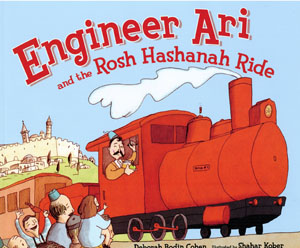 Ari is so pleased to be chosen for the historic ride that he neglects the feelings of Jessie and Nathaniel. But en route to Jerusalem, the thought begins to gnaw at him that he could have been a better, more considerate friend. Ari is so pleased to be chosen for the historic ride that he neglects the feelings of Jessie and Nathaniel. But en route to Jerusalem, the thought begins to gnaw at him that he could have been a better, more considerate friend.
In his red locomotive, he passes oranges groves and cypress trees, and is presented at the first stop with baskets of apples to bring to the Jerusalemites for Rosh Hashanah. The green color of the apples makes him think of the green-painted locomotive that Jessie drives. He passes palm trees, prickly pear cactuses, and apiaries. At the second station, a boy lifts to him crates of honey, also to be brought to the Jerusalemites for Rosh Hashanah, and the golden yellow color of the honey reminds him of Nathaniel’s locomotive.
The ride continues past wheat fields, and to a third stop where he picks up some challot. The bread also reminds Ari of his friends. Onward to a fourth stop, where a shepherd boy presents him with shofarim to be blown by the Jerusalemites during the High Holidays. You guessed it: the shofar is a sound that Nathaniel loves.
Past olive trees and underground springs to the walled city of Jerusalem, Ari continues. He delivers his cargo and can’t wait to return to Jaffa.
“I hurt Jessie and Nathaniel’s feelings when I bragged,” he throught. “On Rosh Hashanah and Yom Kippur we apologize for our mistakes. We do teshuvah. Teshuvah means turning ourselves around an promising to do better.”
And so, Ari heads back for Jaffa, determined to make things right.


PEOPLE OF THE BOOKS
A lesbian comes out to the Orthodox followers of her father, the Rav
Disobedience by Naomi Alderman; Penguin Paperback, 2007
By David Strom
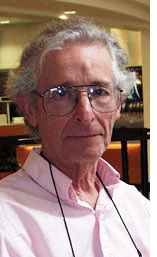 SAN DIEGO—Ronit Krushka was returning home to London after being away for many years. Her father, the well-loved and revered Rav Krushka had just died. Though she was estranged from her father for the last few years, she mourned his death. Ronit hoped, and spiritually needed to return to New York City with her mother’s Shabbat candlesticks. SAN DIEGO—Ronit Krushka was returning home to London after being away for many years. Her father, the well-loved and revered Rav Krushka had just died. Though she was estranged from her father for the last few years, she mourned his death. Ronit hoped, and spiritually needed to return to New York City with her mother’s Shabbat candlesticks.
Rav Krushka had left no male heirs. His religious Orthodox followers needed a male to take the place of the Rav in the hope that this particular Jewish sect could continue with some continuity. They couldn’t wait for Ronit to have a male child. She was already thirty-two and single with a slight chance of marriage. And she was no longer Orthodox. The congregational leaders needed to act fast and they did.
After some minor in-fighting, the leadership agreed upon the Rav’s nephew, Dovid Kuperman, to be the next leader of the congregation. (Of course, Dovid was not yet made aware of the decision). “Dovid was a Rabbi, this much was admitted, but he was not a Rav. The distinction was subtle, for one may become a Rabbi simply through study and achievement, but the title Rav is given by a community to a beloved leader, a guiding light, a scholar of unsurpassed wisdom.” Dovid might earn the title of Rav, but the likelihood of that happening seemed remote to the congregational leadership. His wife seemed to be a big problem for the congregation as well. They thought all was not well with Esti Kuperman. She had some trouble, some difficulty. Everyone knew Dovid. During the last days of the Rav’s life, Dovid stood at the Rav’s side helping him cope with the simplest tasks of worship, daily congregational visitations and correspondence. Dovid loved the Rav.
Ronit arrived in London excited by her return home, yet tired from the long flight from New York. From the airport she traveled to Dovid’s house thinking comfortable thoughts about her past life in the Orthodox community. When she left for New York, Dovid was not married. He was now. She wondered about his wife. Did she know the woman he married? Did they go to school together? Did Dovid and his wife have any children? Was he happily married? Would he want to take the Rav’s position? All of these thoughts brought forgotten or repressed memories into her consciousness.
As she knocked on Dovid’s door and rang the doorbell, she realized she had not told him or anyone else that she was returning. He answered the doorbell. He was shocked and both were glad to see each other. Dovid shouted to his wife to come see who was at the door. When Ronit realized Dovid married her childhood girlfriend and sweetheart Esti, she quickly caught her breath and her thoughts. Esti and Ronit greeted and hugged each other like old friends casually do. Both were happy to see each another.
For Ronit her sexual feelings for Esti were dormant and possibly dead. She had sexual liaisons over the years with other women and men. Ronit suspected that Esti did not. She conjectured that Esti, living in a very closed religious environment, repressed her homosexual feelings and worked hard fulfilling the traditional role as a good Jewish wife to Dovid.
Esti was aroused by the fact that her first lover had returned to London. She, over the many years that Ronit lived in the United States, thought about Ronit and what she was doing with her life. She still warmly cherished her connection with the worldlier Ronit.
Over the next few days Ronit returned to her childhood home seeking to find her mother’s Shabbat candle sticks. Ronit could not find them. She also spent a difficult and very trying Friday night/Shabbat dinner with one of the leaders of her father’s synagogue. The leader’s wife, Rebbetzin Goldfarb asked, “So, Ronit, any young men in your life?” Ronit wanted to tell her what she wanted to hear. She truly wanted to say that he was Jewish and a doctor and that she was planning on getting married next year. She was tempted to invent a story about how the two of them were talking about wedding plans and the future. But she didn’t.
She said, “Actually, Rebbetzin Goldfarb, I am a lesbian. I live with my partner in New York. Her name is Miriam. She’s an architect.”
By Sunday the small world of that particular Orthodox sect planned how to coax/bribe/force Ronit to return to New York City. It had to be done before the shloshim, thirty days of mourning was over. The congregation wanted to have a community hesped, memorial service, for the Rav, where they wanted to announce the appointment of Dovid as its new leader, so they didn’t want Ronit at the memorial. Her presence would remind the world that disobedience was alive within their own narrow and cloistered world.
Ronit did and did not accept the leadership’s advice about leaving before the hesped. No one knew, except Dovid and Esti, whether she would or would not attend it.
At the hesped many people spoke and praised the life of the Rav. Rabbi Dovid Krushka was one of the last to speak. As he walked to the lectern he took the hand of Esti and they proceeded together onto the platform.
“My wife,” he said, “would like to say a few words.”
“Speech,” she said. “One month ago, the Rav gave us his thoughts on the matter of speech. On its importance, on the holiness of each word that proceeds from our mouths. He told us that, with speech, we imitate God. As God created this world with speech, so, too, we create worlds with our words. What world,” said Esti, “have we created with our words in this past month?”
The hall was utterly silent.
“Speech” she said. “It is the gift of creation. For God created the world from speech and so our speech, too, is the power to create. Let us examine, for a moment, God’s creation. He spoke and the world came into being. If God had valued silence above all, He would never have spoken to create the world. If He had prized only the silence of His creations, He would never have given a part of it the gift of speech. Our words are powerful. Our words are real. This does not mean, however, that we should remain silent forever. Rather, we must measure our words. We must be sure that we use them, like the Almighty, to create and not to destroy.”
“I have desired that which is forbidden to me. I continue to desire it. And yet, I am here. I obey the commandments. It is possible”—Esti smiled—“as long as I do not have to do so in silence.”
The author, Naomi Alderman, has written a thoughtful and insightful novel on a sensitive religious/political subject. In the Garden of Eden, Eve was disobedient. Moses disobeyed when he threw the Tablets to the ground. Many, if not all, of us have disobeyed our parents in some fashion or other. Is disobedience a part of the moving forward/on process? The novel, Disobedience, captures the most loving aspects of Orthodoxy, but also, its paradoxes.


ADVENTURES IN SAN DIEGO JEWISH HISTORY
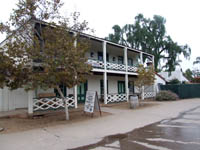
Robinson-Rose House
|
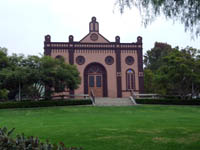
Old Temple Beth Israel |
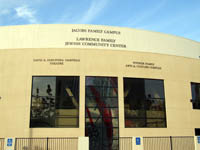
Lawrence Family JCC |
Editor's Note: We are reprinting news articles that appeared in back issues of various San Diego Jewish newspapers. You may access an index of the headlines of those articles by clicking here. You may also use the Google search program on our home page or on the headline index page to search for keywords or names.
Caravan of Hope Arrives April 11th
From Southwestern Jewish Press, April 1949, page 14
The “Caravan of Hope” will arrive in San Diego Monday, April 11. Sponsored by Lasker Lodge B’nai B’rith and the United Jewish Fund of San Diego, the Caravan will bring to San Diego several Palestinian war heroes and National Jewish leaders of the United Jewish Appeal.
An open meeting for the Jewish community will be held that night at 8 at the Temple Center with speakers, entertainment, B.B. awards and refreshments rounding out a complete program. Invitations have been extended to the entire Jewish Community to attend the event.
To be honored at the affair will be Capt. Nachman Kaplansky and Lt. Schulmaith Kronsky heroes of the Israeli Army, Levi Eshkol—assistant to Ben Gurion, and David Uchell, Denver leader.
Fund Leaders Attend Celebration of First Anniversary of the Republic of Israel
From Southwestern Jewish Press, May 1949, page 1
Mr. and Mrs. Saul Chenkin are in New York where they attended the celebration of the first anniversary of the Republic of Israel as the guests of Chaim Weismann, first president of the new State. The Chenkins took with them a check for $25,000.00 from the united Jewish Fund of San Diego which was delivered to National Campaign leaders as an advance on the San Diego quota for 1949.
This brings to $100,000.00 the amounts advance so far this year, according to Al Hutler, Executive Director of the Fund, against the quota of over $300,000 to be raised. $112,237 has been subscribed by 515 contributors—an 8 percent increase in individual giving to the point, according to Hutler. These funds were raised at the Year of Opportunity Dinner held April 24 and at subsequent affairs held by the Women’s and Youth divisions.
The Young people’s division rasided $4,300 of their $10,000 quota at their opening meeting.
The women’s division will hold the third in a series of luncheons on May 24 at the El Cortez Hotel. Every Jewish woman in the city has been invited to attend. $28,000 has been raised by this group so far this year under the leadership of Mrs. Nathaniel Ratner and Mrs. Gabriel berg.
While the Chenkins are in the East, Louis Steinman will continue as chairman of the “Year of Opportunity” Campaign…
Hadassah
From Southwestern Jewish Press, May 1949, page 4
Mrs. Gabriel Berg, president, announces that Hadassah’s donor luncheon will be held June 8. Mrs. Anedythe Halprin of Oregon, past National President of Hadassah, will be guest speaker. Mrs. Manuel Haffner heads the committee in charge of this luncheon.
Because the Hadassah Regional Conference will be in progress on May 11, the regular meeting date of Hadassah, the meeting will be held on the following Wednesday, May 19. At that time election of offcers will be held, and Mrs. Berg urges all members to attend and vote.
Over 125 women brought gifts of cash for Palestine Supplies at the April meeting. The Junior section presented $200 to Hadassah as their initial contribution.
Beth Jacob Auxiliary
From Southwestern Jewish Press, May 1949, page 4
Mrs. George Shelley, president of Beth Jacob Auxiliary, extends her appreciation to all who attended the Passover Seder at Beth Jacob Synagogue, and to all the committee who helped to make this Passover a memorable one for everyone there.
Among the honored guests were the newly arrived refugees from Europe, service men and their families and some newcomers from Mexico. Rabbi {Baruch} Stern conducted an inspiring service, explaining the ritual to the younger guests—lending an air of festivity to the holiday.
Nu?
From Southwestern Jewish Press, May 1949, page 5
By Red Borscht
… Some one of the corps of columnists will undoubtedly submit an accurate observation of the Cavalcade of B’nai B’rith as presented by the San Diego Lasker Lodge on the evening of April 11. The Cavalcade, publicized as such, drew a S.R.O. Crowd. Nu is interested in some of the comments that were made immediately after the meeting in the center… “Ech mir a reception for the past presidents”…”Since when does B.B. collect U.J.F.”… They’ll hear from me at the next meeting”…”Sure, but he already made that big pledge during the luncheon earlier in the day”…but our favorite for the evening… the 200 pound character who complained bitterly about the dryness of the corned-beef sandwiches…but still had four of ‘em in his big loppeh. …
Ceremony May 30 {Decoration Day}
From Southwestern Jewish Press, May 1949, page 8
Tifereth Israel Synagogue has planned a most memorable Decoration Day ceremony to be observed in the Home of Peace Cemetery on May 30.
I. Jacobson, president, and the cemetery committee, Sam Druskin, M.S. Berlin and Paul Nestor, proudly announce that the beautification of the cemetery, with hedges, grass, trees and shrubs having been completed the cemetery has been changed into a lawned park.
“A most beautiful memory of those dear ones who have gone to their final resting place will remain an everlasting thought in the minds of those who visit this holy ground,” states Jacobson.
Personality of the Week {Levi Eshkol}
From Southwestern Jewish Press, May 1949, page 10
Levi Eshkol, the “Harry Hopkins of Israel, as Premier David Ben Gurion’s ace troubleshooter, has just arrived in the United States at the invitation of United Jewish Appeal General Chairman Henry Morgenthau Jr, to assist in the UJA’s nation-wide campaign for $250,000,000 on behalf fo the Joint Distribution Committee, United Palestine Appeal, and United Service for New Americans. Former deputy Defense Minister in Israel’s Provisional Government and or many years a leading figure in the Haganah, Mr. Eshkol is today the Chief of the agricultural Settlement department of the Jewish Agency for Palestine. This distinguished soldier-statesman served with the Jewish Legion under General Allenby in World War I, and later became one of the founders of Deganya, the first communal settlement in Jewish Palestine. Mr. Eshkol, a man of numerous outstanding achievements, is one of the Jewish homeland’s leading housing and irrigation and is an executive of the National Housing Company and a director of the Mekoroth Water Company, largest in Israel. Jewish communities throughout the United States now campaigning on behalf of the united Jewish Appeal will have an opportunity to meet and hear Mr. Eshkol in the course of the next several months.

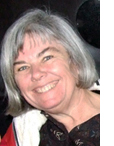 Nancy Harrison Nancy Harrison
cruise & tour specialist
(619) 265-0808



SAN DIEGO JEWISH WORLD THE WEEK IN REVIEW
Middle East
U.S. should heed Israeli lesson in Lebanon by Ira Sharkansky in Jerusalem
Some questions Obama should ask Abbas by Shoshana Bryen in Washington D.C.
The New York Times & 9th Commandment by Sheila Orysiek in San Diego
San Diego/Arts
Strom's klezmer hero helps save Pinsk by Donald H. Harrison in San Diego
Adventures in San Diego Jewish History
—April 1949:Our Policy
—April 1949:Introducing Our Columnists by Lewis Solomon and Ray Solomon
—April 1949:Leaders Herald Return of Jewish Press
—April 1949: United Jewish Fund Campaign For $309,000 to Open This Week
Lifestyles
Cane-raising at 60th college reunion by Natasha Josefowitz, Ph.D
USA
'Never Give In' is Arlen Specter's credo by Sheila Orysiek in San Diego
San Diego
San Diego, Tijuana to join in worldwide salute to Tel Aviv's 100th anniversary by Donald H. Harison in San Diego
Adventures in San Diego Jewish History
—August 7, 1947: Week at Palomar Closes Program
—August 7, 1947: Letter from Albert Hutler to Ray Solomon
—April 1949: Cavalcade To Trace Record of Lasker Lodge
—April 1949: J.W.B. Returns to San Diego
Middle East
Olmert's fingers on levers of power make those who would oust him quite cautious by Ira Sharkansky in Jerusalem
Judaism
Culture of death versus culture of life by Rabbi Leonard Rosenthal in San Diego
Stopping gossip—one hour at a time by Rabbi Baruch Lederman in San Diego
Adventures in San Diego Jewish History
—July 31, 1947: Pioneer Women
—July 31, 1947: Yo-Ma-Co
—August 7, 1947: Jewish Press to Suspend Publication: Decision Announced at Meeting of Representatives
—August 7, 1947: Announcement {Suspension of Publication}
—August 7, 1947: City-Wide Picnic at El Monte in Sept.
—August 7, 1947: Young Folks Zionist Group Formed
Arts
An errant yet charming father returns by Carol Davis in San Diego
Sports
A bissel sports trivia with Bruce Lowitt in Clearwater, Florida
Middle East
The heroes of Israel, from the Exodus hunger-strikers to Goldwasser and Regev by Judy Lash Balint in Jerusalem
San Diego
Making children smile, aiding world peace by Donald H. Harrison in San Diego
Arts
Nathan Detroit and friends trodding the boards at Moonlight Amphitheatre in Vista by Carol Davis in Vista, California
Chapter 17 of Reluctant Martyr, a serialized novel by Sheila Orysiek in San Diego
Adventures in San Diego Jewish History
—July 31, 1947: Lasker Lodge B.B.
—July 31, 1947: Jewish War Vets
—July 31, 1947: Jewish War Vets {Auxiliary}
—July 31, 1947: USO-JWB Activities
San Diego County Jewish Trivia: Balboa Park by Evelyn Kooperman in San Diego
Middle East
Bodies of Goldwasser and Regev return to Israel in post-Lebanon II war exchange by Ira Sharkansky in Jerusalem
Israel gives Hezbollah propaganda victory by Shoshana Bryen in Washington, D.C.
Arts
Questions propel play and Jewish director by Carol Davis in Solana Beach, California
Thursdays with the songs of Hal Wingard:
—#58, Dependency
—#60, Nurse!
—#324, Dear Mr. Spine
Adventures in San Diego Jewish History
—July 31, 1947: B’nai B’rith to Present Radios to Naval Hospital
—July 31, 1947:Camp Handicraft Exhibited at Reception
—July 31, 1947: 'CARE' offices move to new location
—July 31, 1947: Initial Meeting Accomplishes Much
Middle East
Palestinians depend on Israeli economy; yet Fayyed tries to weaken its prospects by Shoshana Bryen
Australia
A Roundup of Jewish news in Australia by Garry Fabian in Melbourne
—UN's one-sidedness condemned by Prof. Bayfsky
—Year-long saga finally laid to rest
—The end of a partnership
—Federal opposition shadow minister visits Israel
—Rabbi to officiate at first lesbian ceremony
—Community pays tribute to Rabbi Groner
—Charges imminent against Adelaide rabbi and wife
—Businessman launches Orthodox newspaper
—Kadimah Marks 10 Years
—It's Never too late to celebrate your Barmitzvah
—Another Jewish Boy hits the Big League
—By weight, rabbi warns of hazards of a kosher diet
Arts
Real life with 'Phantom' star Marni Raab by Carol Davis in San Diego
Sports
Watching All-Star game with friend Fox by Donald H. Harrison
Adventures in San Diego Jewish History
—July 24, 1947: JCRA
—July 31, 1947: Flash! {Camp Palomar}
—July 31, 1947: World Affairs Institute Here August 4th to 8th
—July 31, 1947: UJF Quota More Than Half Collected
Link to previous editions
< BACK TO TOP
|
|
